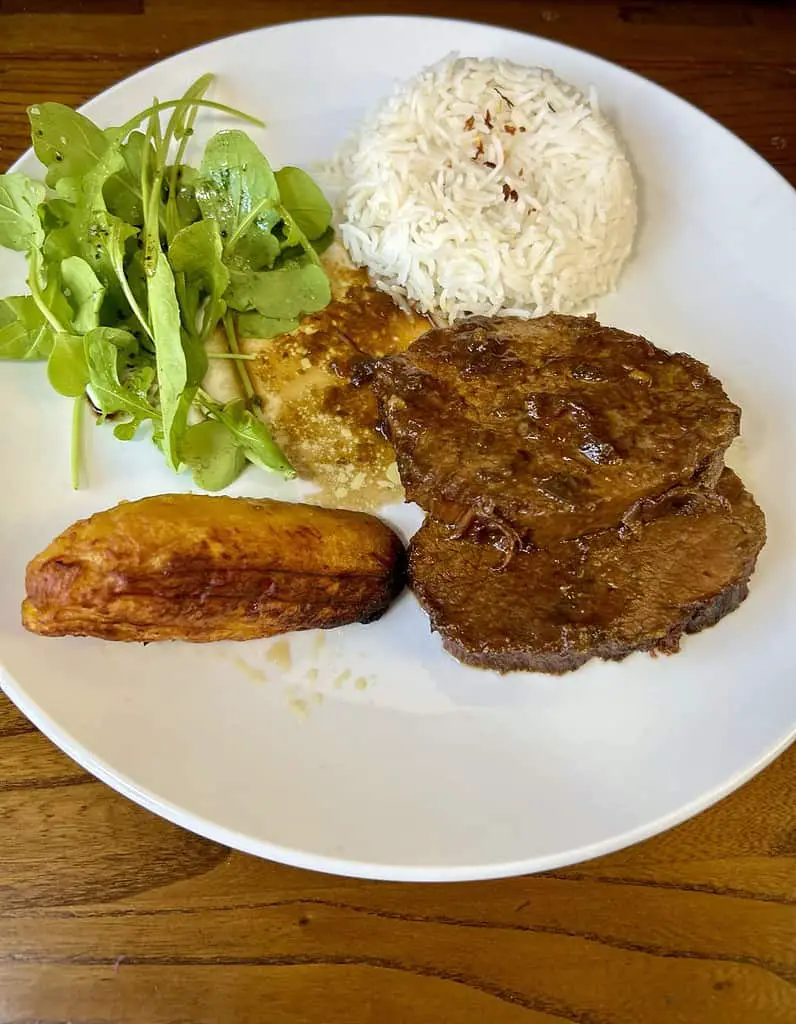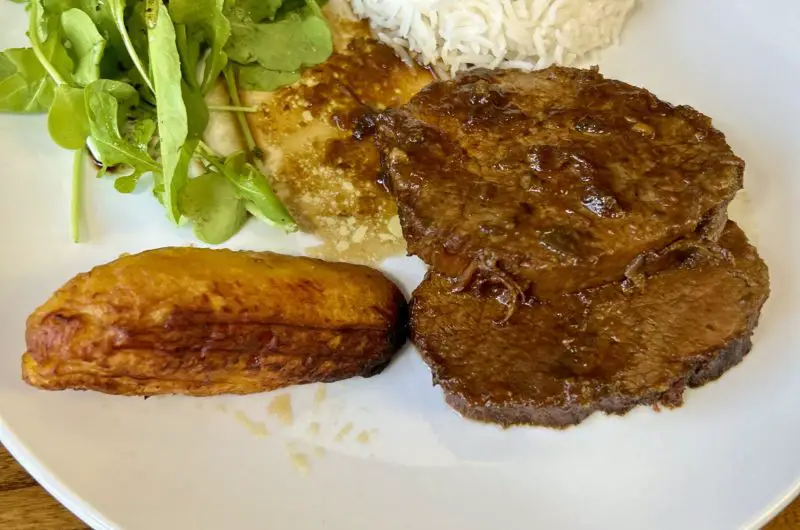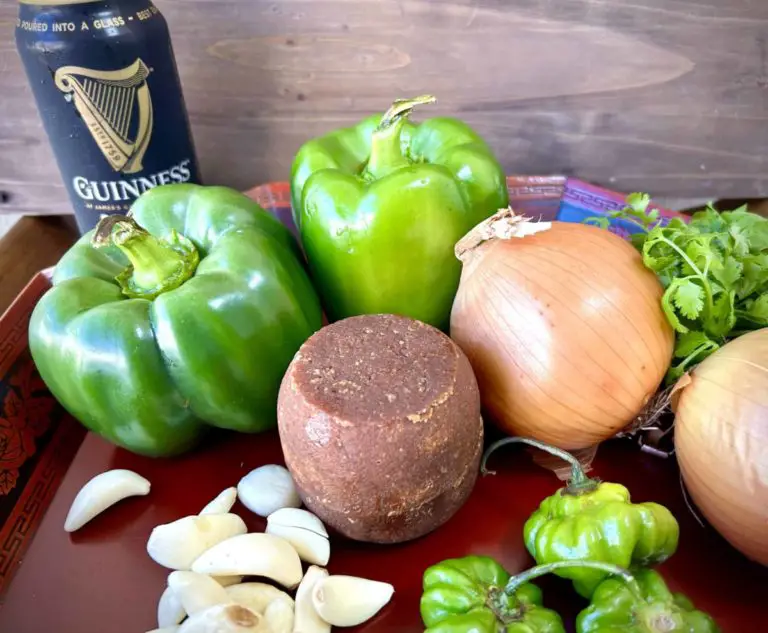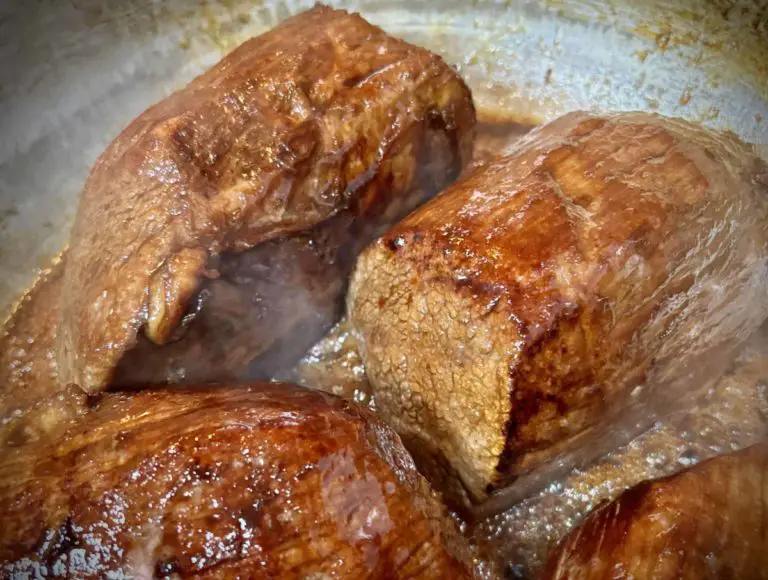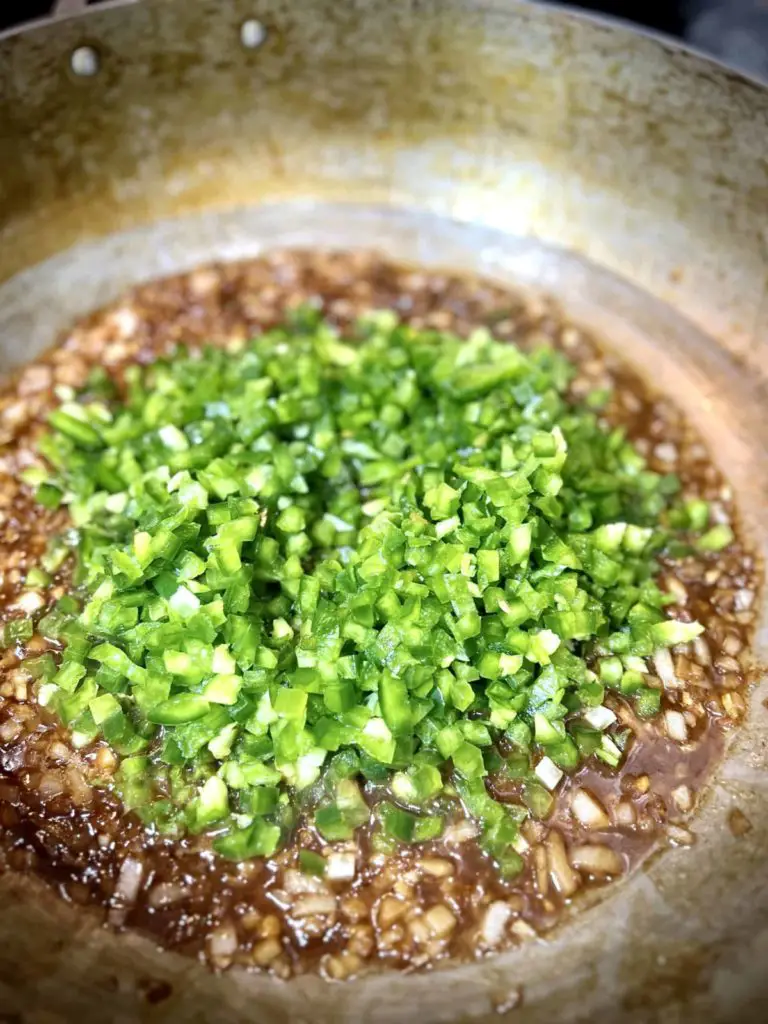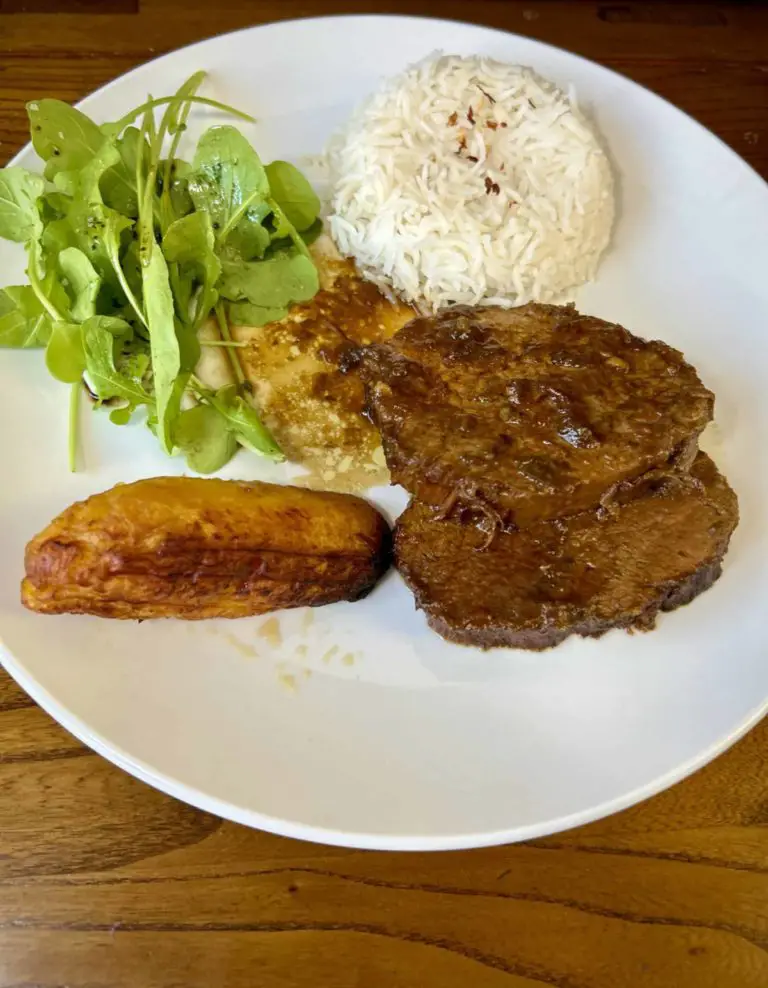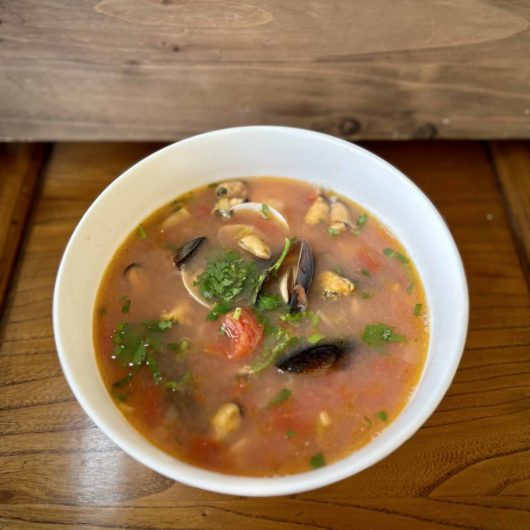Every culture has a dish that holds a special place in people’s hearts. A dish capable of evoking cherished memories and transporting us to moments of joy and togetherness. These are the qualities that define comfort food. Asado Negro is that comfort food for many Venezuelans, including myself. This hearty and flavorful meal has the power to make us reminisce about our childhood, family gatherings, and “better times”. This is especially true for those of us who live “far from home.”
“Asado Negro” translates to “black roast,” which describes the dark, caramelized sauce that coats the meat. Traditionally, this dish utilizes the eye of round cut, tenderizing it in the slow cooking process while infusing complex flavors into the meat. This dish is a testament to the diverse influences that shaped Venezuelan society, symbolizing unity and heritage.
Every Venezuelan family has its unique recipe, passed down from generation to generation. Each claims that theirs is the best. Asado Negro serves as a delightful link to the past, reminding us of the importance of honoring our culinary heritage, regardless of where life’s journey may take us.
Today, I am thrilled to share my favorite Asado Negro recipe. Generously passed down by my wife’s aunt Ana, who now lives in London. While each family has their secret ingredients, I’ll divulge a few of ours, adding a personal touch to this culinary journey.
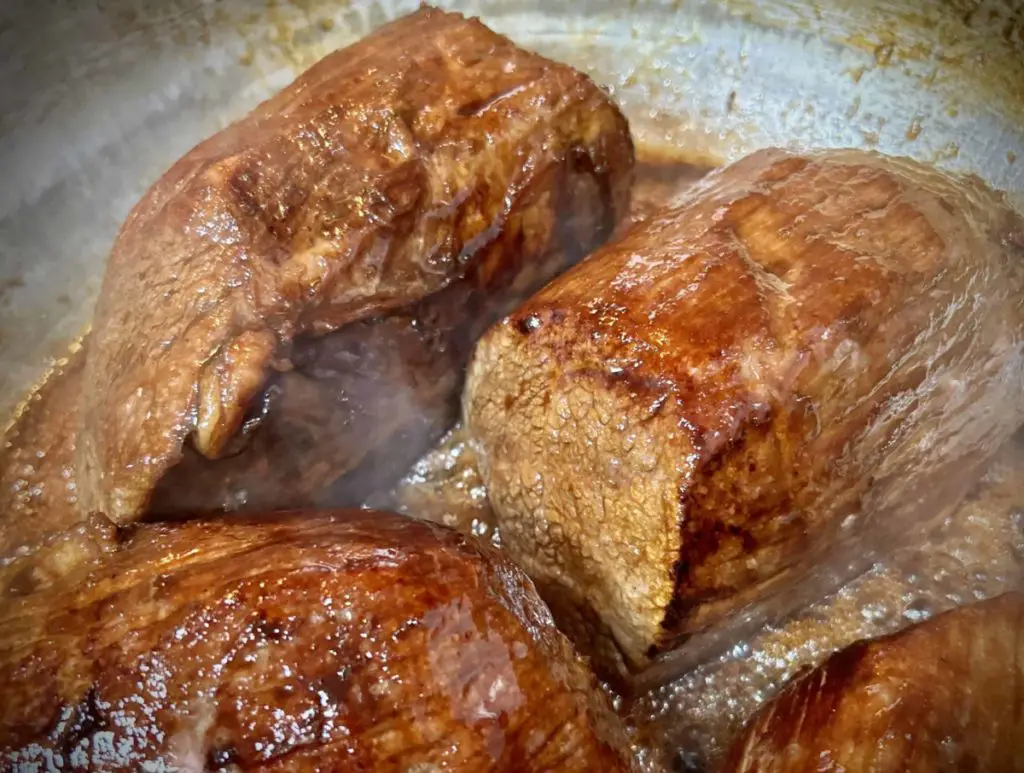
Venezuelan Asado Negro
10
servings30
minutes2
hours30
minutesKeep the screen of your device on
Ingredients
5 lbs 5 Eye of round beef
8 oz 8 Panela / Papelon grated
1 tsp 1 Cumin
1 1/2 can 1 1/2 Dark beer
1 bottle 1 Malt beverage (Malta)
3 3 Green bell peppers
3 3 Sweet peppers (Aji Dulce)
2 Medium 2 onions
10 10 Garlic cloves
1 1 Bunch of Cilantro
Salt and Pepper to taste
2 oz 2 Vegetable oil or any other neutral oil
Directions
- Grate the panela (unrefined brown sugar) and spread the grated panela along with salt and pepper all over the eye of round to fully cover.
- Heat the oil in a large cooking pot with a lid over high heat. When the oil starts to heat, place the beef in the pan and sear it on each side until nicely browned.
- On a different pan heat a bit of oil on high heat add the finely chopped onions, bell peppers, sweet peppers, garlic and most of chopped cilantro. Move constantly to avoid this delicious sofrito to burn.
- Once golden add the sofrito to the cooking pot with the meat and add the cumin, dark beer, and malted beverage. Lower the heat and put the lid on to simmer the meat for at least two hours until the meat is tender. Add more liquid a necessary if running low.
- Once the meat is tender, transfer the beef to a cutting board and let it rest for 5 to 10 minutes, and slice it into 1/2-inch thick slices.
- Add the sliced meat to the reduced sauce and simmer for 10 – 15 more minutes. Serve hot with mashed potatoes or white rice.
Notes
- Panela, also known as papelón, is a type of unrefined cane sugar commonly used in Latin America and the Caribbean. It is made by boiling and evaporating sugarcane juice until it solidifies into a solid block or cone-shaped form. Panela has a rich, golden-brown color and a distinct, caramel-like flavor that is not quite as sweet as refined sugar. It is known for its natural sweetness and unique taste that adds depth to various dishes and beverages including Asado Negro.
- Malta is a non-alcoholic carbonated beverage that is particularly popular in Latin America and the Caribbean, but I’ve seen it in Europe and east asian countries as well. It is a malt-based drink made from barley grains, water, hops, and sweetners (sugar, high fructose corn syrup or panela depending on the brand). Malta has a distinct dark brown color, a rich and sweet flavor, and a slightly bitter undertone. It can be described as having a taste similar to that of a sweetened dark beer but with no alcohol.
- What is Ají Dulce? It is a sweet pepper variety commonly used in Latin American and Caribbean cuisines. Unlike its spicy counterparts, these small green, yellow or red peppers offer mild heat, a distinct fruity flavor and a delightful aroma. Ají dulce peppers are used as flavoring agents in a variety of traditional dishes, such as stews, sauces, soups, and salsas. They provide a unique taste that enhances the overall flavor without the spiciness, making them an essential ingredient in many regional culinary traditions.
- You should be able to find Ají dulce (sweet peppers), Malta, and Panela at specialized latin grocery stores. If you live in South Florida such as myself, you can find these ingredients at just about any grocery store such as Publix or Winn Dixie.
Did you make this recipe?
Tag @javierhappyeats on Instagram and hashtag it with
Like this recipe?
Follow @javierhappyeats on Pinterest
Join our Facebook Group!
Follow Javier Happy Eats on Facebook
Eye of Round: The Perfect Cut for Asado Negro
You may be wondering, “Why use Eye of Round?” This is a very lean and tough cut of meat from the hindquarters of the animal.
The Eye of Round cut tends to be one of the less tender beef cuts that makes it a poor grilling choice. On the other hand, this means that the eye of round is affordable. However, it shines when roasted or prepared using slow cooking methods. It is also commonly used for thinly sliced roast beef.
To ensure a tender meat, it is important to cook the Eye of Round low and slow. This cooking technique helps break down tough connective tissues. For best results, use moist heat methods like braising or slow roasting, which align perfectly with our approach to cooking Asado Negro.
The Best Fall-Off-The-Bone Tender Cochinita Pibil (Yucatan-Style Pulled Pork)
Difficulty: Difficult7 votes 4.7 Cuisine: Mexican

